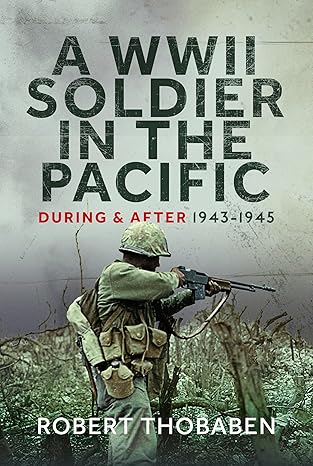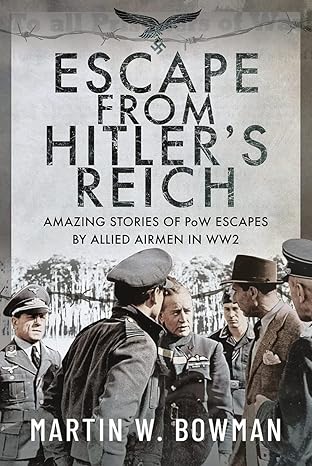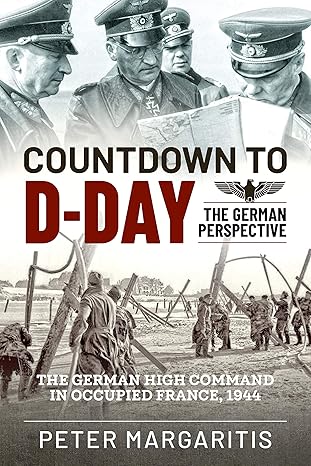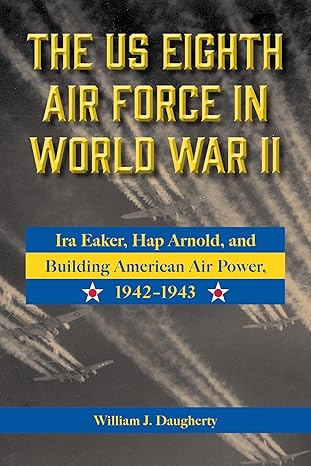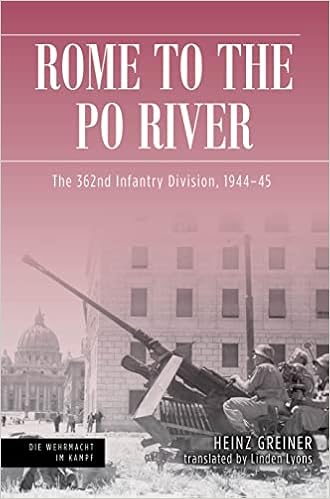American Airborne Units in World War II
By Michael F. Dilley
This short history will cover those combat military groups, squadrons, battalions, regiments, divisions, and the one corps of U.S. airborne units in World War II. It will not include Army Air Corps units (such as the Air Commandos) or Troop Carrier units, or organizations that had American individuals in them who were airborne qualified and even made operational jumps, such as Army and Marine Corps members of the Office of Strategic Services (including those with Jedburgh teams and Operations Groups), or the multi-service, multi-national Special Allied Airborne Reconnaissance Force (which initially included women who had previously jumped into denied areas).
Background
The first plan to use parachute forces by American units was developed during World War I. On 17 October 1918, Brigadier General William P. (Billy) Mitchell, a later proponent of strategic aerial bombing, conceived the idea of dropping an American division by parachute from bomber aircraft into an area in the vicinity of Metz, Germany. The details of the planning were developed by Major Lewis H. Brereton, a member of Mitchell’s Air Service staff. Brereton would later serve as the commander of the First Allied Airborne Army during World War II as a Lieutenant General. (The First Allied Airborne Army consisted of the American XVIII Airborne Corps, which included: the 17th Airborne Division, the 82nd Airborne Division, and the 101st Airborne Division; and the British I Airborne Corps, which included: the 1st Airborne Division and the 6th Airborne Division. Troop carrier units were also part of Brereton’s command.)
In the event, the plan for the Metz operation, which would have air-dropped the U.S. 1st Infantry Division, was cancelled because of the Armistice on 11 November that ended the war. In the intervening years between the world wars, the U.S. military establishment paid little attention to the idea of airborne warfare. Russia and Germany, however, developed forces within their respective militaries that relied on aerial delivery of troops, including by parachute and glider. The American Army conducted brief experiments in 1928 with parachute forces but discontinued them shortly after. It was not until 1938 that serious consideration of airborne warfare was again raised, this time at the Command and General Staff College at Fort Leavenworth, Kansas. This effort was in the form of exercises that involved the formation of doctrine for the employment of airborne forces.
U.S. Army
The formation of American airborne units began on 26 June 1940, with the establishment of the Parachute Test Platoon (PTP) at Fort Benning, Georgia with volunteer members from the 29th Infantry Regiment. This unit was formed to test the feasibility of parachute operations in the U.S. Army. The PTP began training immediately and made its first jump on the morning of 16 August 1940. Although early military planners thought that paratroopers would most likely operate in small units against “communications and supply installation in enemy rear areas,” this concept soon changed. Eventually several Parachute Infantry Battalions (PIBs) were activated at Camp Mackall, North Carolina; Camp Toccoa, Georgia; and Fort Benning. They were manned by graduates of the Airborne School. These battalions included the 501st, 502nd, 503rd, and 504th, as well as others. As decisions were made to create airborne divisions, these battalions were increased in strength to become Parachute Infantry Regiments (PIRs), generally with the same numerical designation. In a history not necessary to detail here, the 2nd Battalion, 503rd PIR was eventually redesignated as the 509th PIB and will be referred to that way hereafter.
The first group of glider pilots completed their training in June 1942. The first Glider Infantry Battalions (GIBs) were created on 5 September 1942 and soon after were upgraded to Glider Infantry Regiments (GIRs). By this time, decisions had been made to man the several airborne divisions with two or three PIRs and one or two GIRs, although initially the preference had been for two GIRs and one PIR. Soldiers in glider units, unlike the paratroopers, did not receive hazardous duty pay.
On 15 August 1942, the 82nd Infantry Division and the 101st Infantry Division were redesignated as airborne divisions at Camp Clairborne, Louisiana. The 82nd was assigned the following regiments: the 504th and 505th PIRs and the 325th GIR, along with parachute and glider field artillery, engineer, and other units (signal, military police, medical, intelligence, etc.). The 507th and 508th PIRs, originally deployed to England as the 2nd Airborne Brigade, were added to the 82nd when it deployed to England following operations in Sicily and Italy. The 507th and 508th were added because the 504th PIR had remained in Italy. Following the D-Day operations, the 507th PIR was transferred to the 17th Airborne Division and the 504th was brought back in to the division from Italy. The 82nd conducted combat jumps (two separate jumps on succeeding nights) in Italy, and combat jumps and glider operations in Sicily, France, and Holland.
The 101st was initially assigned the following regiments: the 502nd PIR and the 327th and 401st GIRs along with the same mix of additional units as the 82nd. Eventually the 501st and 506th PIRs were added to the division and the soldiers of the 401st GIR were split up between the 325th GIR (of the 82nd) and the 327th GIR. This led to the disbanding of the 401st. The 101st conducted combat jumps and glider operations in France and Holland.
The 509th PIB was always an independent unit throughout the war. It was deployed to England and eventually made the first combat jumps by American airborne units, in North Africa. It later operated in Italy and Southern France, where it also conducted combat jumps. The 503rd PIR remained an independent unit throughout the war and was deployed to the Pacific area of operations. The 503rd conducted combat jumps in New Guinea and the Philippines.
The 11th Airborne Division was activated on 25 February 1943 at Camp Mackall and contained the 511th PIR and the 187th and 188th GIRs, along with the same mix of additional units as the other airborne divisions. The 11th was deployed to the Pacific area of operations where its soldiers were cross-trained in parachute and glider operations. The 11th conducted combat jumps and glider operations in the Philippines.
The 17th Airborne Division was activated on 15 April 1943 at Camp Mackall and consisted of the 513th PIR and the 193rd and 194th GIRs, along with the same mix of additional units as the other airborne divisions. It deployed to England and then Europe (adding the 507th from the 82nd), where it fought during the war. The 17th conducted a combat jump and glider operation in Germany.
The 82nd, 101st, and 17th were incorporated into the XVIII Airborne Corps, which had been redesignated from the XVIII Corps on 27 August 1944. The XVIII Airborne Corps conducted combat jumps and glider operations in Holland and Germany.
The 13th Airborne Division was activated on 13 August 1943 at Camp Mackall and included the 515th PIR and the 88th and 326th GIRs along with the same mix of additional units as the other airborne divisions. Eventually, following its deployment to England, the previously independent 517th PIR, which had made a combat jump and seen action in Southern France, was added to the division. The 13th was kept in strategic reserve throughout the war, ultimately deploying to France in early 1945, but never was deployed in combat.
In addition to the 517th PIR and the 509th PIB, two independent battalions which had been formed in the Canal Zone (the 551st PIB and the 550th Airborne Infantry Battalion, a glider unit), operated under the auspices of the First Airborne Task Force, commanded by Major General Robert T. Frederick, the former commander of the First Special Service Force – see below. The First Airborne Task Force was a composite U.S., British, and French corps-sized unit that conducted operations in Southern France. All of these units conducted a combat jump and glider operation in Southern France. The First Airborne Task Force was disbanded in November 1944
The 541st and 542nd PIRs, formed from the 1st Airborne Training Battalion, conducted parachute training of soldiers at the Airborne School at Fort Benning and acted as a holding unit for soldiers who rotated through them to units overseas. Both units moved between Fort Benning and Camp Mackall. The 541st PIR was activated on 12 August 1943 at Fort Benning. In July 1945, the 541st was deployed to the Philippines and assigned to the 11th Airborne Division, pending operations directed against the Japanese home islands. Soon after arriving, the men of the 541st were reassigned to the other regiments in the 11th Airborne Division and the regiment was deactivated, much to the disappointment of its men.
The 542nd PIR was activated on 1 September 1943, also at Fort Benning. On 17 March 1944, the 542nd was deactivated and reactivated as the 542nd PIB, moving to Camp Mackall on 1 July 1944. At Camp Mackall, the 542nd tested new techniques and equipment for the Airborne Center Command Headquarters. On 1 July 1945, the 542nd was reflagged as the Airborne Center Training Detachment.
The 555th PIB, the only all-black airborne unit in the U.S. Army, was activated initially as a company on 25 February 1944 and was upgraded to a battalion on 25 November 1944. Although the 555th never left the States, it was given a classified mission to locate, disarm, and return as much of the equipment as possible for intelligence exploitation from Japanese balloon bombs. The baskets on these balloons contained incendiary devices on them. The balloons were being sent by the Japanese, in retaliation for the Doolittle Raid in 1942, along the prevailing winds to crash and start fires in North America. The 555th operated under the cover of military Smokejumpers with the U.S. Forest Service in California and the Pacific Northwest. The 555th also assisted in training pilots of the U.S. Navy in low level bombing operations in support of ground troops. All told, the 555th conducted over 1,200 individual jumps to fight 36 forest fires.
The First Special Service Force was the only military unit in the U.S. Army that was comprised of both U.S. and Canadian soldiers. Formed in response to plans to use a mechanized sled type vehicle in the snow in Norway, the Force was activated on 9 July 1942 at Fort William Henry Harrison in Helena, Montana. Force men received training, with emphasis on night-time execution, in techniques of parachute operations, snow and mountain operations, and amphibious warfare. Their training also included the use of explosives for demolition and a new method of hand-to-hand fighting, known as the O’Neill System. Eventually, the plan to use the snow sled in combat was dropped. However, the Force continued to train for combat. The Force first deployed to Kiska, Alaska, in the Aleutian Islands, where the operations plan called for one of its regiments to jump behind Japanese lines; this jump was later cancelled and the entire Force was committed as a conventional infantry unit in the fighting, making an amphibious landing. The First Special Service Force fought in Alaska, Italy, and, as part of the First Airborne Task Force, in Southern France. The First Special Service Force was disbanded in December 1944 and the Americans from the unit, along with members of the 99th Infantry Battalion and the survivors of Darby’s Rangers (the 1st, 3rd, and 4th Ranger battalions), were incorporated into the 474th Infantry Regiment.
U.S. Marine Corps
The U.S. Marine Corps also became interested in parachute units. In October 1940, the 1st Marine Parachute Battalion (MPB) began its airborne training at Naval Air Station Lakehurst, New Jersey. The 2nd MPB trained there as well, in December 1940. The 3rd MPB received its training at Camp Kearney, California, near San Diego. Soon after, a parachute training center was opened at Camp Elliot, next to Camp Kearney, and another training center was established at New River, North Carolina. These three MPBs were deployed separately to the Pacific and fought there in conventional infantry roles, including conducting some amphibious landings. Eventually, on 1 April 1943, the 1st Marine Parachute Regiment (MPR) was activated at Vella Lavella, in the New Georgia Group, and included all three of the MPBs. On 2 April 1943, the 4th MPB was activated and remained in a training status at Camp Elliot and later moved to Camp Pendleton, California where it was disbanded on 19 January 1944. Although the first three MPBs were deployed in combat operations, none of them conducted any operational jumps. A jump was scheduled onto the Japanese airfields of Kahili and Kara on Bougainville but the American planners cancelled the jump, fearing heavy casualties. Units of the 1st MPR fought on the islands of Guadalcanal, Gavutu, and Tanambogo in the Solomon Islands; Bougainville; the island of Choiseul; and in other Pacific battles. All three of the MPRs were returned to the States by early 1944 and disbanded (along with the Marine Raider units) on 29 February 1944.
The development of the Marine glider program proceeded separately from its parachute program because Headquarters, Marine Corps did not envision gliders to operate with parachute units. In July 1941, the Marine Corps announced its intention to train 50 officers and 100 non-commissioned officers as glider pilots. Planning was also initiated to procure 75 12-man gliders to transport one “Air Infantry Battalion.” The design, development, and procurement of gliders became a difficult course and included many twists, turns, and changes of policy along the way. Glider pilot training eventually began in November 1941 at a civilian training course.
The first gliders were delivered in mid-December 1941 and additional training began at Paige Field, Parris Island, South Carolina. At the same time the Glider Detachment was created at Cherry Point, North Carolina. In mid-March 1942, Glider Group 71 (MLG-71) was formed to replace the Glider Detachment; it had a proposed organization of 20 officers and 218 enlisted men. The group organization included Headquarters and Service Squadron 71 and Marine Glider Squadron 711 (VML-711), and was initially stationed at Marine Corps Air Station, Parris Island. Glider Group 71 was assigned to Fleet Marine Force for command and control. A more permanent base for Glider Group 71 was later established at Marine Corps Air Station, Eagle Mountain Lake, Texas. Glider Group 71 arrived at the base on 24 November 1942. A second base was established at Edenton, North Carolina but was never used for gliders. At least two others bases were designated but also were never used for gliders, one at Norman, Oklahoma and the other at Addison Point, Florida.
Eventually the Marine Corps decided that gliders were not suited to support the planned amphibious operations on the islands in the Pacific; this spelled the end of the glider program. On 24 June 1943, that decision was formalized; the Marine glider program was terminated and Glider Group 71 was disbanded.
Geronimo and the Paratroopers
From almost the earliest formation of airborne units in the U.S. Army, Indian names or symbols have been used by paratroopers. For example, the 501st PIR had used the symbol of an Apache war chief holding a lightning bolt below a chute canopy, with the word “Apaches” contained within the shroud lines of the parachute, superimposed over the name “Geronimo,” a famous Chiricahua Apache Indian leader of the American southwest. The 501st unit crest (distinctive insignia) shows an Indian symbol of a Thunderbird with the unit motto (“Geronimo”) on a scroll underneath.
The 506th PIR unit crest (distinctive insignia) features the Indian name for the mountain near Campo Toccoa, where the regiment trained. Currahee Mountain was the scene of many unit running and other training exercises. Currahee means “stand alone” or, sometimes, “we stand alone.” The insignia shows six parachutes descending onto a mountain. The paratroopers of the 506th adopted Currahee as their regimental motto because that was their objective behind enemy lines, to “stand alone.”
The First Special Service Force used several Indian-based ideas in its symbols. Although the First Special Service Force was not on jump status, all of its combat echelon soldiers were jump qualified; a jump was scheduled for one of its regiments in Alaska but was cancelled at the last hour. The unit patch is in the shape of an arrowhead. The branch insignia for both officers and enlisted soldiers incorporated the crossed arrows of the Indian Scouts, which the First Special Service Force used with the written permission of the surviving members of the Indian Scouts. And the soldiers of the First Special Service Force, both Canadian and American, were referred to as “Braves.”
In addition to these various names and symbols, the cry “Geronimo!” is associated with early paratroopers as they exited the plane. This cry was later adopted by paratroopers in many units. So, how did this tradition get started? It began with the Parachute Test Platoon at Fort Benning in the summer of 1940. On the night before their first mass jump (they had already completed two individual tap-out jumps) four platoon members had been to the post theater to see the movie Geronimo. Later, over several beers, they discussed whether they would be afraid or even aware of their surroundings when they jumped out of the plane the following day. One of them, Private Aubrey Eberhardt, told the others that he would shout the name "Geronimo" when he jumped to prove he was not afraid. The others all thought this was a good idea and agreed to do the same thing. When the time came, all four of them followed through with their pact from the night before. With their actions that day they originated what became the jumping cry of American paratroopers. The division song of the 11th Airborne Division even contains this phrasing:
|
Down from Heaven comes Eleven
And there’s Hell to pay below – Shout Geronimo: Geronimo! |
Insignia used by units include:

The pocket patch of the 501st Parachute Infantry Regiment (Photo by the author) 
The distinctive insignia of the 501st Parachute Infantry Regiment (Photo by the author) 
The distinctive insignia of the 506th Parachute Infantry Regiment (Photo by the author) 
Shoulder Sleeve Insignia of the First Special Service Force (Photo by the author) 
Collar branch insignia worn by U.S. and Canadian officers of the First Special Service Force (Photo by the author) |
The “silver wings” of the paratrooper were designed by Captain (later Lieutenant General) William P. Yarborough when he was assigned to the 501st PIB. He had been chosen by the Adjutant General of the War Department to design and procure a suitable badge to be worn by qualified paratroopers as a symbol of their certification. He was authorized by his commander to accept whatever design he thought was acceptable. Yarborough made the initial design on 3 March 1941 and provided a copy to the Army Quartermaster General. The approval process of the wings design at the War Department took one week; Yarborough’s design was formally approved on 10 March. With the assistance of Mr. A.E. Dubois, of the Quartermaster General’s office, an order of 350 wings was made to the company of Bailey, Banks, & Biddle of Philadelphia. The wings were delivered to the 501st on 14 March. As a final step, to protect the design from any unauthorized reproduction, Yarborough submitted his design to the U.S. Patent and Trademark Office for assignment of a patent. The patent was approved on 2 February 1943. The formal description of the badge is: “An oxidized silver badge 1-13/64 inches in height and 1-1/2 inches in width, consisting of an open parachute on and over a pair of stylized wings displayed and curving inward.” In order to be able to wear these wings personnel must have satisfactorily completed the prescribed proficiency tests while assigned or attached to an airborne unit or to the Airborne Department of the Infantry School, or participated in at least one combat parachute jump.

Basic Parachutist Insignia, as worn by those who successfully complete airborne training. (Photo by the author) |
A badge for glider soldiers, similar to the paratroopers’ jump wings, was eventually designed and approved for issue and wear; official approval came on 2 June 1944. Its formal description is: “An oxidized silver badge 11/16 inch in height and 1-1/2 inches in width consisting of a glider, frontal view, superimposed upon a pair of stylized wings displayed and curving inward.” In order to be eligible to wear the glider badge, personnel must have been assigned or attached to a glider or airborne unit or to the Airborne Department of the Infantry School, and satisfactorily completed a course of instruction or participated in at least one combat glider landing into enemy-held territory.

Glider badge (Photo by the author) |
In the U.S. Army, the advanced qualifications of Senior Parachutist and Master Parachutist (symbolized by a star for Senior and a star and wreath for Master on top of the parachute canopy of the wings) were authorized in 1949.
The Navy and Marine Corps Parachutist Insignia, awarded to members of those services who have been awarded the Basic Parachutist Insignia (Jump wings, above) and have completed an additional five static-line jumps, was approved for issue and wear in 1963.

Navy and Marine Corps jump wings (Photo by the author) |
| * * * |
Show Notes
Bibliography
Books:
Adleman, Robert H. and George Walton; The Devil’s Brigade; Philadelphia, PA; Chilton Books; 1966
Bergen, Howard R.; History of 99th Infantry Battalion - U.S. Army; Oslo, Norway; Emil Moestue A-S; 1945
Biggs, Bradley; The Triple Nickels - America's First All-black Paratroop Unit; Archon Books; Hamden, CT; 1986
Blair, Jr., Clay; Ridgway's Paratroopers: The American Airborne in WW II; New York; Doubleday, 1985
Brereton, Lewis H.; The Brereton Diaries: The War in the Air in the Pacific, Middle East and Europe, 3 October 1941-8 May 1945; New York; William Morrow and Company, 1946
Breuer, William B.; Geronimo! American Paratroopers in WWII; New York; St. Martin Press; 1989
Burhans, Robert D.; The First Special Service Force – A War History of the The North Americans 1942-1944; Washington, DC; Infantry Journal Press; 1947
De Trez, Michel; First Airborne Task Force – Pictorial History of the Allied Paratroopers in the Invasion of Southern France; Belgium; D-Day Publishing; 1998
Devlin, Gerald M. and William P. Yarborough; Paratrooper! The Saga of the U. S. Army and Marine Parachute and Glider Combat Troops During World War II; New York; St. Martin’s Griffin; 1986
Flanagan, Edward M., Jr.; The Angels - A History of the 11th Airborne Division 1943-1946; Washington; Infantry Journal Press; 1948
Guthrie, Bennett M.; Three Winds of Death - The Saga of the 503rd Parachute Regimental Combat Team in the South Pacific; Chicago; Adams Press; 1985
Huston, James A.; Out of the Blue – U.S. Army Airborne Operations in World War II; West Lafayette, IN; Purdue University Studies; 1972
Raff, Edson D.; We Jumped to Fight; New York; Eagle Books; 1944
Rottman, Gordon L.; US Airborne Units in the Pacific Theater 1942-45; London; Osprey Publishing; 2007
Updegraph, Charles L., Jr.; U.S. Marine Corps Special Units of World War II; Washington, DC; History and Museums Division, HQ US Marine Corps; 1972
Other:
The website for the U.S. Army’s Quartermaster Museum, Fort Lee, Virginia for the official descriptions of the parachutist’s and glider wings.
Insignia are from the author’s collection, except for the Glider Badge and the Navy and Marine Corps Parachutist Insignia, which are from a different collection.
| * * * |
© 2026 Michael Dilley
Written by Michael F. Dilley. The author retains the copyright to this piece bearing his name. No reproduction, copying, or other forms of retrieval without permission. If you have questions or comments on this article, please contact Michael F. Dilley at: mfdilley@gmail.com.
About the author:
Michael F. Dilley has a B.A. in History from Columbia College in Missouri and is a retired U.S. Army Military Intelligence officer. He served two tours in Viet Nam and six and one-half years in airborne units. In the field of military history, he was written three books (one of them as co-author) and contributed to two anthologies. He has also written many articles and book reviews dealing with special purpose, special mission units.
* Views expressed by contributors are their own and do not necessarily represent those of MilitaryHistoryOnline.com.

